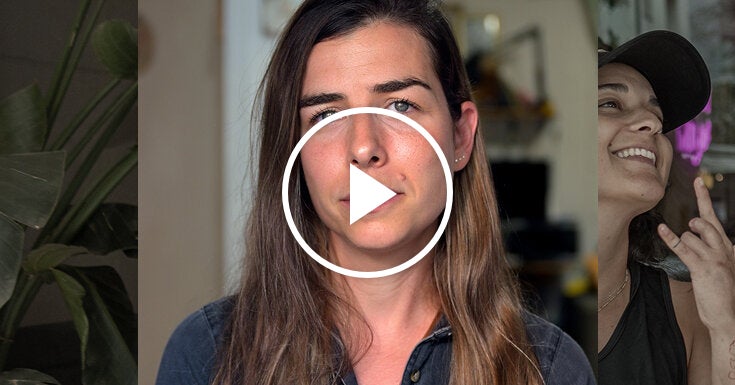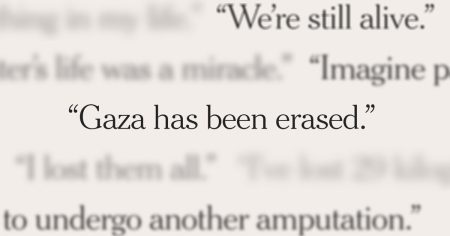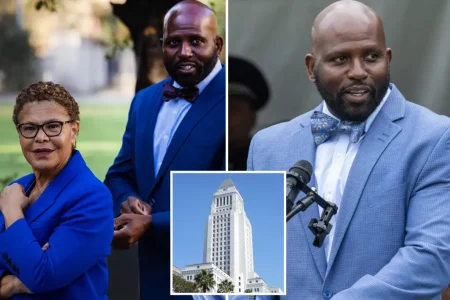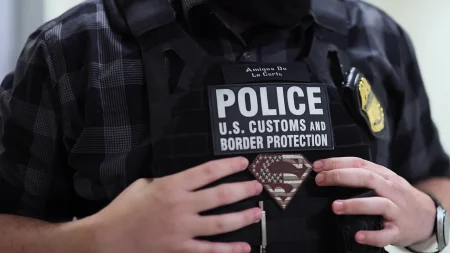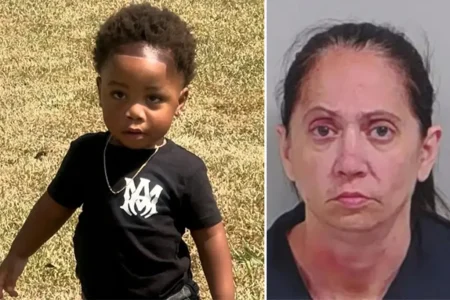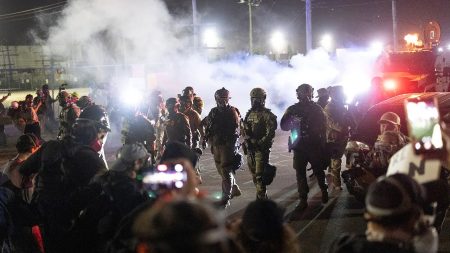One Hostage’s Path to Healing and Advocacy: Emily Damari’s Journey After 471 Days in Gaza
By James Marshall | October 7, 2025
From Captivity to Champion: The Remarkable Recovery of a British-Israeli Survivor
In the quiet moments between public appearances, Emily Damari still struggles with the shadows. Her hands occasionally tremble when certain sounds—a door slamming, helicopter blades—pierce the carefully constructed calm of her new reality. These are the invisible scars carried by a woman who endured 471 days in captivity in Gaza, held hostage by Hamas militants following the October 7, 2023 attacks on Israel. Since her release, Damari has emerged as not only a survivor but a powerful advocate for those still held captive, transforming personal trauma into a global call for action that resonates across political divides.
“There’s a before and after October 7th for me—for all of us,” Damari explains, sitting in the living room of her sister’s Tel Aviv apartment where sunlight streams through sheer curtains. “The woman who was taken isn’t the same one who returned.” Indeed, the British-Israeli dual citizen has become a reluctant symbol of resilience in a conflict where such symbols are desperately needed. Photographer Avishag Shar-Yashuv, who has documented Damari’s journey for The New York Times since her release, captures both the visible recovery and the invisible healing process of a former hostage finding her voice. “What strikes me most about Emily is how she transforms when speaking about the other hostages,” Shar-Yashuv notes. “It’s as if advocating for them gives purpose to her own suffering.”
The Captivity That Changed Everything
The morning of October 7, 2023, began like any other for Damari, who was visiting friends at Kibbutz Be’eri near the Gaza border. The kindergarten teacher had planned to return to her home in Jerusalem that afternoon. Instead, she would not see freedom again for nearly sixteen months. When Hamas militants stormed the kibbutz, Damari was captured alongside several others and transported into Gaza through one of the numerous breaches in the border fence. What followed was an ordeal marked by constant relocation, inadequate nutrition, and psychological torture that included being told repeatedly that she had been abandoned and forgotten by her country.
“We were moved constantly, sometimes daily, sometimes weekly,” Damari recounts, her voice steady though her eyes reflect the trauma. “Different houses, different handlers, different basements. The uncertainty was designed to break us.” Medical assessments following her release confirmed significant weight loss, vitamin deficiencies, and unhealed fractures in her right foot and wrist—injuries sustained during her initial capture. Dr. Sarah Weinstein, who leads the rehabilitation team working with returned hostages at Tel Hashomer Hospital in Tel Aviv, explains that the physical recovery, while challenging, often progresses more rapidly than psychological healing. “The body begins to heal when proper nutrition and medical care are restored,” Dr. Weinstein says. “The mind’s recovery timeline is far less predictable and often requires much longer-term intervention.”
From Personal Trauma to Global Advocacy
What distinguishes Damari’s story is not just her survival but her transformation into a global advocate. Within weeks of her December 2024 release as part of a complex hostage exchange, she began appearing at international forums, testifying before the United Nations Human Rights Council, meeting with heads of state across Europe, and speaking at university campuses in the United States. Her message transcends the political complexities of the Israeli-Palestinian conflict, focusing instead on the humanitarian imperative of securing freedom for all hostages regardless of nationality.
“This isn’t about politics anymore—it’s about basic humanity,” Damari told a packed auditorium at Columbia University last month, her voice gaining strength as she spoke. “Every day in captivity feels like a year. Every night lasts an eternity. No human being should endure this, regardless of which flag they call their own.” This approach has enabled her to reach audiences that might otherwise be resistant to engaging with the conflict, focusing on the universal value of human dignity rather than geopolitical positions. Former hostage negotiator Robert Greenfield, who has observed Damari’s advocacy work, notes that “she speaks with a moral clarity that cuts through ideological barriers. When someone has lived through what she has, their words carry an authenticity that can’t be manufactured or dismissed.”
The Psychological Journey of Survival and Recovery
The psychological dimensions of Damari’s recovery reveal both the resilience of the human spirit and its vulnerability. Trauma specialists working with former hostages describe a complex process that involves rebuilding not only psychological safety but also one’s fundamental sense of self. “Prolonged captivity disrupts your core identity,” explains Dr. Maya Levin, a trauma specialist who has worked with multiple returned hostages. “Your autonomy is stripped away, your connections to others are severed, and your entire existence becomes contingent on forces outside your control.”
For Damari, reclaiming her sense of agency has been central to healing. She maintains a rigorous daily routine that includes physical therapy, counseling sessions, and scheduled periods for advocacy work. “Structure helps,” she acknowledges. “During captivity, all control is taken from you. Creating structure now is how I tell myself: you have choices again.” Yet the process is non-linear. There are setbacks—nights filled with terrors, moments when a crowded room becomes overwhelming, instances when the sound of Arabic being spoken nearby triggers a panic response. “Recovery isn’t a straight line,” Damari says with the weary wisdom of someone who has learned this truth firsthand. “Some days I feel almost normal, and then suddenly I’m back in that first basement in Gaza, listening for footsteps outside the door.” This candor about her ongoing struggles has made her an even more effective advocate, humanizing the abstract concept of “hostages” and illustrating the long-lasting impact of captivity even after physical freedom is restored.
The Remaining Hostages: A Mission That Drives Recovery
What seems to propel Damari forward, even on the most difficult days, is her commitment to those still held in Gaza. According to officials, approximately 32 hostages remain in captivity, though the exact number remains disputed as some may no longer be alive. For Damari, each represents not just a number but a person with a name, a face, and a family suffering daily torment of uncertainty. Her advocacy has included memorizing details about each remaining hostage—their names, ages, medical conditions, and personal stories—information she shares relentlessly in every interview and public appearance.
“When I was there, I made a promise to myself that if I ever got out, I would not stop speaking until everyone comes home,” she explains during a rare moment of emotional intensity. “I know what they’re experiencing right now—this very minute while we’re sitting here talking. How could I go back to a normal life knowing that?” This mission provides a framework for her recovery, giving meaning to her suffering and transforming her trauma into purposeful action. Mental health professionals recognize this as a powerful healing mechanism. “Finding meaning in trauma can be protective against developing chronic PTSD,” notes Dr. Levin. “For some survivors, advocacy becomes a way to reclaim power and transform victimization into something purposeful.” However, this path carries its own risks, as the constant retelling of trauma and immersion in advocacy work can sometimes delay personal healing processes.
A New Chapter in an Ongoing Story
As the second anniversary of the October 7 attacks approaches, Damari’s journey represents just one chapter in the complex and ongoing aftermath of a conflict that has reshaped the Middle East. Her story illustrates both the devastating human cost of the hostage crisis and the remarkable capacity for human resilience in its wake. Through Shar-Yashuv’s lens, we see a woman reclaiming her life one day at a time—sometimes with confident strides, other times with faltering steps, but always moving forward.
“I don’t want to be defined forever as ‘the hostage,'” Damari reflects as our interview concludes, glancing at a calendar where speaking engagements and therapy appointments share equal space. “Someday, I hope to return to teaching. I miss the children, their laughter, their innocence. But first, I need to know I did everything possible for those still waiting to come home.” As she steps onto her sister’s balcony, the Mediterranean sunlight illuminates her face—a face that has become instantly recognizable to millions worldwide as a symbol of both horrific suffering and extraordinary courage. In that moment, the duality of her existence becomes clear: Emily Damari is simultaneously healing from her past and fighting for others’ futures, navigating personal recovery while carrying the weight of public advocacy.
Her story reminds us that behind the headlines and political complexities of the Israeli-Palestinian conflict lie individual human experiences of profound depth and consequence—stories that demand not just our attention but our continued engagement with the humanitarian imperatives that transcend political divisions. And as Damari continues her journey toward healing while advocating for those still held captive, she offers a powerful testament to the capacity of the human spirit to transform even the darkest experience into a source of light for others.





